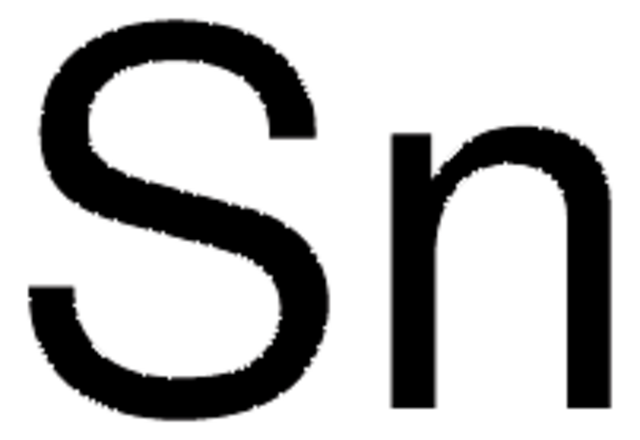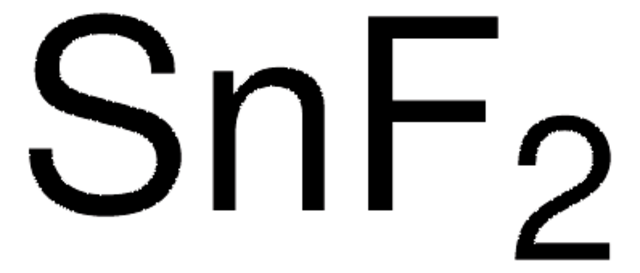265632
Tin
powder, <45 μm particle size, 99.8% trace metals basis
Sinónimos:
Sn
About This Item
Productos recomendados
Nivel de calidad
Ensayo
99.8% trace metals basis
Formulario
powder
idoneidad de la reacción
core: tin
reagent type: catalyst
resistividad
11 μΩ-cm, 20°C
tamaño de partícula
<45 μm
bp
2270 °C (lit.)
mp
231.9 °C (lit.)
densidad
7.310 g/mL at 25 °C (lit.)
cadena SMILES
[Sn]
InChI
1S/Sn
Clave InChI
ATJFFYVFTNAWJD-UHFFFAOYSA-N
Categorías relacionadas
Aplicación
Código de clase de almacenamiento
13 - Non Combustible Solids
Clase de riesgo para el agua (WGK)
WGK 3
Punto de inflamabilidad (°F)
Not applicable
Punto de inflamabilidad (°C)
Not applicable
Equipo de protección personal
dust mask type N95 (US), Eyeshields, Gloves
Elija entre una de las versiones más recientes:
¿Ya tiene este producto?
Encuentre la documentación para los productos que ha comprado recientemente en la Biblioteca de documentos.
Los clientes también vieron
Artículos
In recent years, the price of tellurium, a key component in the bestperforming thermoelectric materials, has increased significantly, leading to the question, “Is it economically viable to produce thermoelectric generators on an industrial scale?
The price of tellurium, a key component in many thermoelectric materials, has risen in recent years, leading to the search for more cost-effective substitutes. This article presents silicide materials as a cheaper potential alternative.
Nuestro equipo de científicos tiene experiencia en todas las áreas de investigación: Ciencias de la vida, Ciencia de los materiales, Síntesis química, Cromatografía, Analítica y muchas otras.
Póngase en contacto con el Servicio técnico






